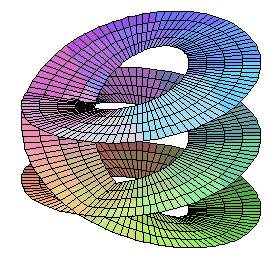Lineally thinking, we conceive of time as "we do one thing, we do the next thing". In essence, "we progress". Yet linearity does not I think reflect our actual experience of time. For whatever we do next depends on what we might have done before: not even immediately before, but maybe the 'before' long ago (the 'before' may even be mystical). Indeed, when I think 'why' I am doing the thing I am doing now, the 'befores' seem multiple and complex, each one fading in and fading out as I anticipate my next move.
Individually, our obsession with time and the linear processes of action we take in it are conceived within the context of our individual selves. This despite the fact that whatever we do, we do to others, and that whatever we do is shaped by others.
My thoughts about learning outcomes yesterday hint at a critique of the learning outcomes as essentially belonging to this thinking about time and learning. The criticisms are:
1. learning outcomes are linear and cumulatively progressive;
2. learning outcomes are individualistic, not collective
As a way of dealing with these two problems with the conception of time, I want to suggest an alternative based on:
1. time as 'pattern', rather than process
2. time as collective, rather than individual
 When I think "what does my time look like", I can conceive a pattern. I've been reading about Riemann surfaces (Weyl wrote a great book about it). This may be what time looks like...
When I think "what does my time look like", I can conceive a pattern. I've been reading about Riemann surfaces (Weyl wrote a great book about it). This may be what time looks like...And if time looks like this, it has pattern and symmetry. How does this relate to "what I do next"? How does it relate to the collective?
Personally, I find that what I do next is determined by perceiving an aspect of 'patterning' in my experience. I have some knowledge of where I stand on the surface of time, and some understanding of the local topology. My understanding of this pattern may be due to an appreciation of its symmetry. I also find that that this symmetry is not purely individual. The symmetry relates to my action, and the consequences of my action with others. Is my action to seek archimedian points which lie between my internal state and the social forces I am subjected to? Is the surface of time the output of continual plotting of archimedian points?
Much as I'm fascinated by the metaphysical implications of all this, I think it's useful to be practical. I've been looking at Jack Mezirow's emancipatory pedagogy recently. It strikes me that he's doing something quite similar to the identification of 'double-binds' I did with the computing students the other week. I think that to see your way through a double bind is precisely to get a bigger feel for the topological landscape you inhabit. Unpicking a double-bind is to identify an archimedian point, and by so doing, the topology and symmetry start to reveal themselves.
Learning outcomes need to be seen as part of the double-bind, an aspect of the social forces that shape agency. If we use them like this, then we might be able to leverage something both rational and deeper in the learning processes of teachers and learners.

No comments:
Post a Comment